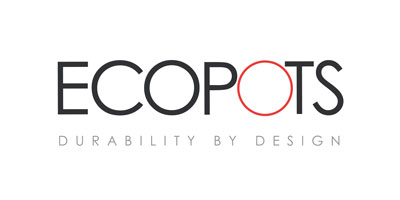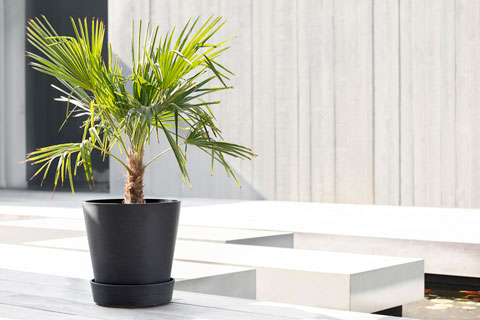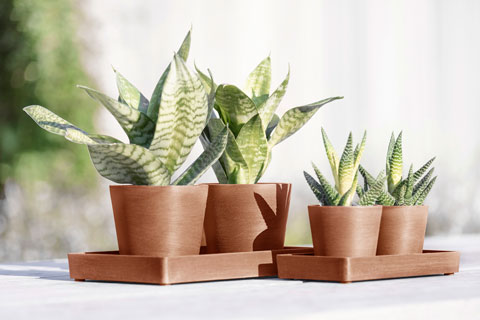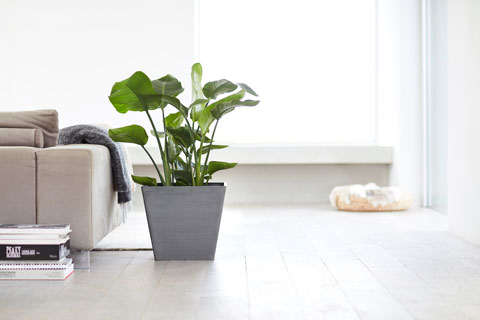2/1/2023
Great Houseplant Homes
Jose Rodriguez


Houseplants have been a “thing,” with a significant spike in sales between 2019 and 2021. Millennials have fueled much of the growth, which changes almost everything for garden centers and plant retailers. In addition to affecting the choice of plants to offer, this shift in demographics is changing retailers’ decisions about containers and accessories. A combination of new factors are influencing customers’ choices of containers—from plant placement and container material to style and size, smart features and sustainability concerns.
How do you choose an optimal mix of SKUs to offer your customers? Understanding what today’s customers want is a first step.
Condo Living or Community Garden Plot?
Current housing trends mean that more people live in smaller quarters and rented spaces. An outdoor garden might occupy half a back yard or grow in containers on a terrace or balcony. According to the National Gardening Association, younger families, renters and apartment/condo
residents drove a disproportionate level of growth in gardening in 2021. These younger gardeners are especially enthusiastic about growing food and involving the family in gardening activities. An earlier study showed that even when raising food, 46% of food gardens include
containers.
In addition to garden settings, container plants now live with their plant parents almost everywhere—in living rooms, bedrooms, kitchens, offices, on patios, at front doors and even in bright, high-humidity bathrooms. Living walls or vertical gardens catch the fancy of avid indoor gardeners for greening up small spaces. As a result, containers have to provide an ideal growing environment for their “residents” while meeting owners’ space and usage requirements—and they have to look good doing it.
 Traditional container choices illustrate the challenge. Although traditional terracotta and clay pots provide good drainage and air circulation, they’re fragile and heavy to move, especially when filled with soil. Terracotta has limited visual appeal and also tends to stain over time. Glazed ceramic pots can be used indoors or outdoors. They offer good drainage, as well as stability for large plants because of their weight. However, that also makes them heavy to move. And, like terracotta, ceramic can crack easily.
Traditional container choices illustrate the challenge. Although traditional terracotta and clay pots provide good drainage and air circulation, they’re fragile and heavy to move, especially when filled with soil. Terracotta has limited visual appeal and also tends to stain over time. Glazed ceramic pots can be used indoors or outdoors. They offer good drainage, as well as stability for large plants because of their weight. However, that also makes them heavy to move. And, like terracotta, ceramic can crack easily.
Fiberglass and plastic pots are reasonably priced, lighter in weight and durable, but they restrict ventilation for the plant, tend to fade outdoors and aren’t viewed as being eco-friendly. Wood, metal, concrete and fabric containers all have similar trade-offs, especially when it comes to indoor usage. Container manufacturers are now starting to respond with innovative materials and designs that address many of these shortcomings.
Style Makes a Statement
When the container has to look as good as the plant it holds, plastic grower pots and traditional clay offerings alone are no longer enough. Interior design trends are strongly affecting containers, which means containers are going upscale.
Home design magazines, such as Veranda, are seeing architectural simplicity, elegance and tradition as trends for 2023. This translates to simpler containers with a limited color palette that show off the plants they contain. Consumers are looking for more unique pieces and neutral color palettes, with strong preferences for modern white and gray containers.
There is also more variety in container shapes. In addition to traditional round pots, consumers are going for large statement pieces, geometric shapes, horizontal planters and vertical frameworks to create a centerpiece or punctuate groupings of plants and furniture. Today’s pots don't always sit on the floor; they can be set into a stand, hung, layered on a tower or mounted to the wall. When consumers are increasingly space-challenged, offering innovative options for growing and displaying plants can translate to better sales.
Smart Features Make Sense
With distinct watering preferences, ensuring the best moisture level for each plant can challenge even the most dedicated gardener. Innovative indoor watering features are becoming more common among container and accessory manufacturers. Self-watering pots with built-in or removable water reservoirs help regulate moisture and prevent root rot. “Smart” watering systems include Wi-Fi connectivity, programmable timers, drip irrigation and customizable features that can be controlled via an app.
Other features are just smart to have, even if they don’t rely on electronics. Integrating wheels into container design makes it much easier to move large or heavy plants anywhere. Now, popular cold-sensitive container plants, such as tropical foliage and citrus, can be easily moved indoors when necessary.
 Sleek wall-mounted hanging brackets are designed for containers with wall hangers integrated into the pot design. Customers living in small spaces can now easily utilize vertical spaces and create their own living walls or collections. Plant towers and grow tables create secure spaces for multiple plants without worry of them falling from tables, ledges or shelves. Look for container offerings that offer versatility and simplify plant care.
Sleek wall-mounted hanging brackets are designed for containers with wall hangers integrated into the pot design. Customers living in small spaces can now easily utilize vertical spaces and create their own living walls or collections. Plant towers and grow tables create secure spaces for multiple plants without worry of them falling from tables, ledges or shelves. Look for container offerings that offer versatility and simplify plant care.
Sustainability is a Must-Have
Sustainability is becoming a have-to-have feature for younger consumers. Houseplants that are known to clean the air have been wildly popular. Drought-resistant and succulent plants appeal to consumers’ desires to live with plants while conserving water supplies.
Large retailers—including Amazon, The Home Depot and Lowe’s—are integrating sustainability into their offerings. Amazon has made sustainability part of its corporate goals, aiming to meet the Paris Accords’ objectives. Through its “climate pledge-friendly” initiative, it’s promoting sustainable products, complete with sales objectives for associated vendors.
Similar sentiment is affecting container manufacturers. Pots need to breathe well, drain well and be made of eco-friendly materials via socially responsible processes. Environmentally friendly growing containers—like peat pots and fiber containers—have long been used for plant propagation. Targeted primarily at growers, few found their way to consumer retail container displays. This is changing, however. A handful of innovators are bringing containers to market that are setting new standards in being environmentally friendly while also meeting consumers’ desires for style, flexibility and smart features.
Pioneering Eco Design
There’s a growing number of individuals or small collectives creating recycled containers for plants. These recycled containers include peat pots, as well as recycled wood, concrete and terracotta products. Some products also include recycled bioplastics or plastics recycled into polyethylene resins. However, small producers typically lack the scale or logistics capabilities needed for reliably meeting retailers’ needs.
One innovative manufacturer located in Belgium is changing that. The Pots Company has launched an impressive collection of containers that check the boxes for style, smart features and sustainability—with the ability to supply at scale and support retailers. The company’s Ecopots are durable, high-quality containers created from 80% post-consumer plastics combined with environmentally conscious components. For consumers who are concerned with end-to-end sustainability, The Pots Company itself is certified carbon-neutral and has earned numerous European certifications for sustainable operations.
Don't Forget the Merchandising
For garden centers and plant retailers, one sadly neglected aspect of selling wonderful containers has been marketing and merchandising support from manufacturers. That, too, is beginning to change. A focus on “grab-and-go” plant offerings in sustainable containers is now making it easy for retailers to set up and sell beautiful assortments of easy-to-live-with plants. Look for retail-ready displays, such as rolling racks and giftables, wall displays and pallet displays. Ready-to-sell merchandising tools and sophisticated point-of-purchase packaging options mean retailers don’t have to create and style entire concepts around containers and plants to successfully sell them.
All of these fresh ideas are welcome news for customers and retailers alike. Ecologically friendly container options enable retailers to give consumers products that meet their social values. Vendor-supported merchandising, marketing and fulfillment options are giving retailers better ways to grow their businesses. Together, they offer new opportunities to elevate sales and set your business apart from the same old, same old. GP
Jose Rodriguez is a managing partner at United Nursery. Since 2010, he has been responsible for strategic initiatives and program development while leading the company’s digital transformation. Prior to joining United Nursery, he served in executive leadership roles with several world-leading technology companies. Today, he applies his love of technology and product development to helping transform and innovate nursery operations and the customer experience. United Nursery is the representative for Ecopots in the U.S.